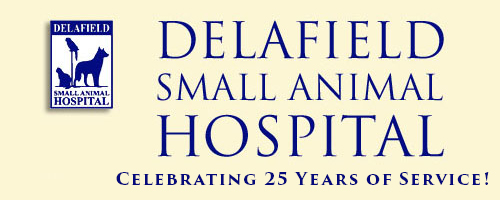Library
-
Hookworm Infection in Cats
Los gusanos gancho son parásitos intestinales de los gatos y los perros. Se llaman de está forma porque sus partes bucales tienen forma de gancho. Usan estas partes para anclarse a la pared de los intestinos. Miden sólo unos 2 o 3 mm (1/8) de largo y son tan pequeños de diámetro que apenas pueden verse a simple vista. Los parásitos gancho se alimentan de los tejidos y sangre del huésped.
-
Hepatic lipidosis, also known as fatty liver syndrome, is unique to cats and is one of the most common liver diseases seen in cats. Usually a cat with hepatic lipidosis has recently gone through a period of anorexia (little or no eating) for 3 to 4 consecutive days. Diagnosis of hepatic lipidosis is made from blood tests that demonstrate poor liver function and/or from a liver biopsy or fine needle aspirate. Hepatic lipidosis is treatable with aggressive nutritional support until a normal appetite returns. Treating the underlying initial cause of the inappetence is also essential for full recovery.
-
There are many potential hazards that pets face during the holidays. With common sense and planning, exposure to these hazards can be avoided, preventing injury or illness. Hazards include tinsel, electrical cords, string from meat, ribbons, Christmas tree water, holiday plants, and food such as chocolate. Some cats do better if given a safe space to stay, away from company, and may require calming remedies to help minimize anxiety and stress during the holidays.
-
Cats, with their curious nature, may fall victim to poisoning within the home. Cats’ small size, lack of ability to metabolize certain drugs, and their tendency to hide symptoms when ill, make their poisoning less obvious compared to dogs and may also delay treatment.
-
If your pet had an emergency crisis, how would you manage it? Ask your veterinary hospital how they handle after-hour emergencies. Use this handout to help you plan ahead and be prepared in the event of a pet health emergency.
-
Ibuprofen is commonly used to treat fever, pain, and inflammation in humans. Ibuprofen poisoning occurs when a cat ingests a toxic dose of ibuprofen, either through misuse or by accident. Ibuprofen poisoning causes many different clinical signs because many different organ systems can be affected. Most commonly, cats show signs related to kidney problems.
-
Icterus is also known as jaundice. It is an excessive accumulation of a yellow pigment called bilirubin in the blood and tissues, most easily seen in the gums and whites of the eyes. Icterus can be caused by hemolysis, liver disease, or obstruction of the bile duct. Your veterinarian will perform screening tests to determine the root cause of icterus.
-
Cats are curious by nature, which can lead them into trouble, especially when they ingest items not meant to be eaten, such as thread, wool, paper, rubber bands, plant materials, and small toys. While some will pass through the digestive tract, some foreign bodies can cause serious problems. This handout explains foreign bodies in the intestinal tracts of cats and reviews clinical signs, diagnostic tests, treatment, and the prognosis of these situations.
-
Cesarean Sections in Cats – Post-Operative Instructions
Una cesárea es una cirugía que se realiza para sacar los gatitos del útero. Normalmente se realiza como un procedimiento de urgencia cuando el parto natural está teniendo problemas.
-
Tooth Resorption in Cats
Una de las enfermedades más frecuentes en la práctica veterinaria en gatos son las lesiones de resorción oral felinas (LROF). Estas lesiones también se llaman cavidades, caries, lesiones del cuello cervical, resorciones de la raiz internas o externas, o erosiones de la línea cervical. Las LROF normalmente se encuentran en la parte exterior del diente, en el área donde el diente se une con la encía.
